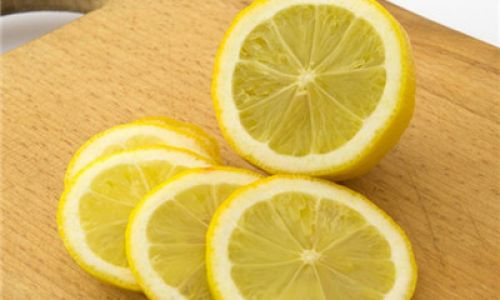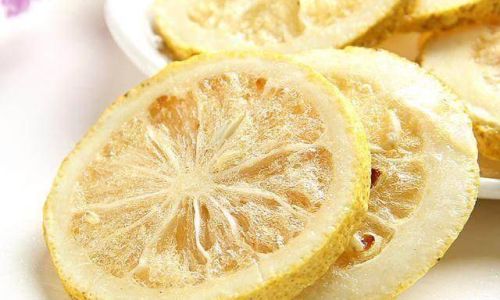Introduction
Lemons, known for their vibrant yellow hue, zesty aroma, and tangy flavor, are a staple in many kitchens worldwide. From adding a burst of freshness to drinks and dishes to being a key ingredient in homemade cleaning solutions, lemons offer a multitude of uses. One way to preserve the essence and benefits of lemons is by drying them. Dried lemons retain their aromatic oils and citrusy essence, making them an excellent addition to teas, potpourris, and even as natural deodorizers. In this comprehensive guide, we will explore the process of how to dry fresh lemons effectively, ensuring you capture all their delightful qualities in a concentrated, long-lasting form.
Why Dry Lemons?
Before diving into the drying process, it’s essential to understand why one might choose to dry lemons rather than simply using them fresh. Dried lemons offer several advantages:

-
Extended Shelf Life: Fresh lemons have a limited shelf life, especially once they’ve been cut open. Drying them extends their usability, allowing you to enjoy their flavor and benefits for months or even years.
-
Concentrated Flavor: Drying concentrates the lemon’s natural oils and flavors, making them more potent. A small piece of dried lemon can add a significant burst of flavor to your dishes or beverages.
-
Versatility: Dried lemons can be used in various ways, from infusing teas and oils to creating natural household cleaners and deodorizers.
-
Space-Saving: Dried lemons take up much less space than fresh ones, making them ideal for storage in small kitchens or for those who like to keep a well-stocked pantry.
Choosing the Right Lemons
The quality of your dried lemons begins with the fresh lemons you select. Here are some tips for choosing the best lemons:
- Appearance: Look for lemons with a bright yellow hue and smooth, blemish-free skin. Avoid lemons with soft spots, wrinkles, or mold.
- Firmness: Press gently on the lemon; it should feel firm and heavy for its size.
- Aroma: Fresh lemons should have a strong, refreshing citrus aroma.
- Organic Options: If possible, opt for organic lemons to avoid any potential pesticides or chemicals.
Preparing the Lemons for Drying
Once you’ve selected your lemons, it’s time to prepare them for drying. Here’s a step-by-step guide:
-
Washing: Rinse the lemons thoroughly under cold running water to remove any dirt, debris, or waxy coatings. Pat them dry using a clean kitchen towel.
-
Slicing or Whole: You can dry lemons either whole or sliced. Slicing them (into thin rounds or half-moons) can speed up the drying process and allow for more even drying. If drying whole, pierce the lemon skin with a fork or knife in several places to allow moisture to escape.
-
Removing Seeds and Pith: If slicing, consider removing the seeds and as much of the white pith (the inner layer of the peel) as possible, as this can be bitter. However, some people prefer to leave the seeds in for added nutritional benefits.
-
Optional Treatments: Some people like to blanch their lemon slices in boiling water for a minute before drying to help preserve color and soften the peel slightly. Others may choose to soak them in a lemon-water solution or a mild saltwater bath to enhance flavor and reduce browning.

Drying Methods
There are several methods to dry fresh lemons, each with its own set of pros and cons. Here are the most popular techniques:
-
Sun-Drying: The traditional method involves laying lemon slices or whole lemons on a clean, mesh screen or baking rack in direct sunlight. This method takes several days to a week, depending on the climate and the thickness of the slices. Sun-dried lemons retain a unique, sun-kissed flavor.
-
Oven-Drying: Preheat your oven to its lowest setting, typically around 150°F (65°C). Place lemon slices or whole lemons on baking sheets lined with parchment paper. Oven-dry for several hours, flipping the slices halfway through if necessary, until they are completely dry and slightly leathery. This method is faster but requires careful monitoring to prevent burning.
-
Dehydrator: Using a food dehydrator is the most controlled and consistent method. Set the dehydrator to a temperature between 95°F and 115°F (35°C to 46°C) and dry the lemons until they are completely dehydrated, usually taking 8-12 hours depending on thickness and the model of the dehydrator.
-
Air-Drying: You can also air-dry lemons indoors by hanging them in a well-ventilated area with low humidity. Use string or a drying rack, and ensure good air circulation around the lemons. This method can take several weeks.
Storing Dried Lemons
Once your lemons are fully dried, store them in an airtight container in a cool, dark place. Dried lemons can last for several months to a year, depending on storage conditions. If you notice any moisture or mold, discard the affected lemons immediately to prevent spoilage of the entire batch.
Conclusion
Drying fresh lemons is a simple yet rewarding way to preserve their delightful qualities for later use. Whether you choose sun-drying, oven-drying, using a dehydrator, or air-drying, the process allows you to harness the essence of lemons in a concentrated, long-lasting form. With their concentrated flavor and extended shelf life, dried lemons make a versatile addition to your culinary arsenal, enhancing dishes, teas, and even household products. So, the next time you find yourself with an abundance of fresh lemons, consider drying them to unlock a world of possibilities. Happy drying!






0 comments